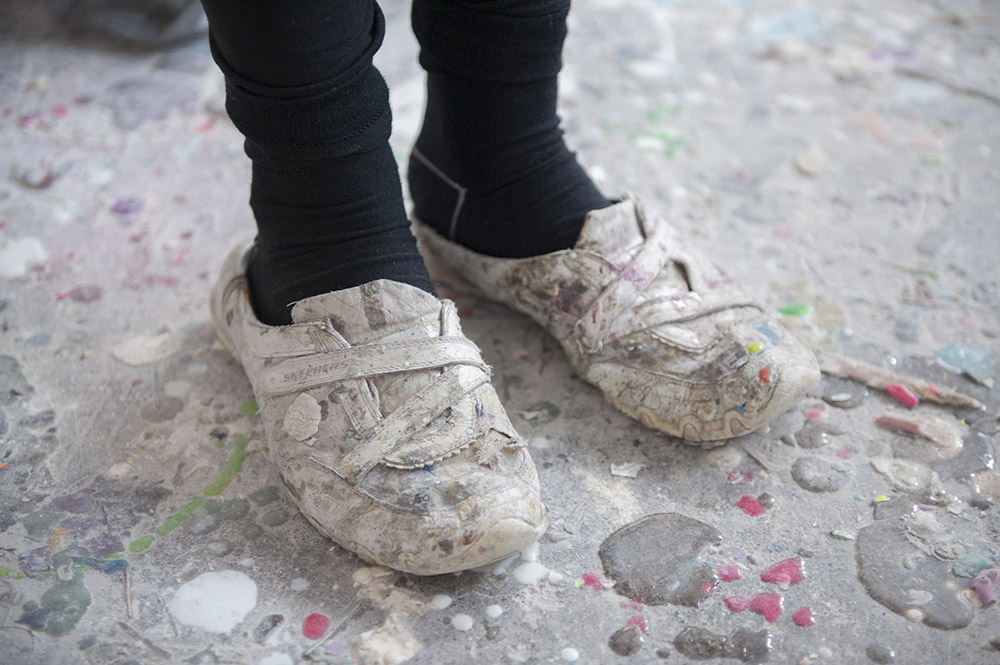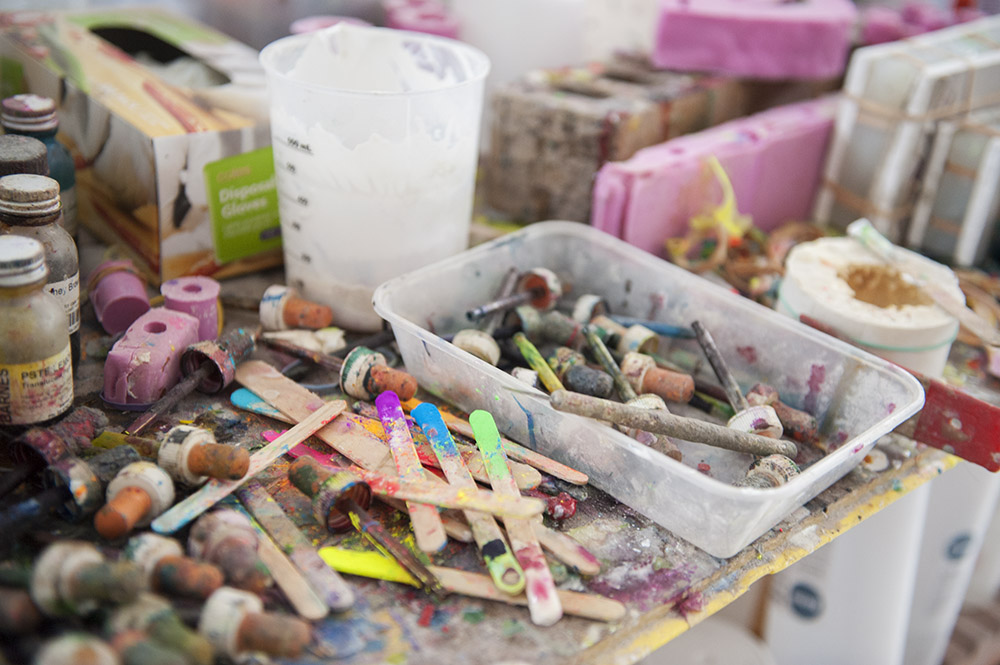Interview: Kate Rohde
If a picture equals one thousand words, then the first photograph that Makers of Melbourne snaps of sculptor Kate Rohde has this piece written. Looking down to admire the resin-stained floor of her Northcote studio, we spy feet encased in clog-like shoes so spattered with the detritus of her creative expression that they camouflage almost completely. It’s as if there is this person that has sprouted out of two seeds planted in the very concrete upon which we stand.
The urge to use this image to create the connection between the artist and her work – fantastical sculptures and vessels made with a psychedelic eye for colour and form – is irresistible, not least because of the obvious reversal: her zoomorphic sculptures balanced upon small paws serving as expression of her fascination with the natural world, while she herself stands upon feet given the appearance of art.
Kate: “I guess I kind of put all my energy in to making the work. It’s pretty consuming, in a way: I get a bit antsy if I don’t get something done, some way, in each day. At the end of the day, if I hadn’t ended up being an artist then I would still make work in some capacity.”
That she ended up an artist at all owes more to serendipity than concentrated intent. Raised in a “very un-arty, tradie family” in the Dandenongs, the young Kate segued a passion for arts and craft projects in to art school.
Kate: “I never had a strong direction. I was always open to opportunity and things that came up. So I just keep going, really: I still sometimes think about getting a real career, something that’s in the drop down menu that’s in the bank. I just imagined art school would be the hold music in my life until I did something else.”
Happily for lovers of her work, that “something else” never materialised. Instead, Kate has spent more than a decade perfecting an approach to expression that first manifested with her intense love for dramatically decorative arts inspired by her passion for Rococo sculpture – an era that still deeply informs her practice.
It has been, she admits, an obsession: that mix of animal imagery, the natural world and an unapologetic flamboyance lighting in her the fire of imagination that has given rise to Kate’s own unique signature.
What is intriguing in all of this is the apparent contradiction present between the basis of Kate’s art work and the element of control (self-expressed) that impacts upon her own nature. On the one hand there is Kate the sculptor daubing her vessels with ad hoc lumps of un-worked clay and dripping resin, on the other is Kate the facilitator expressing concern at the “clutter” of her highly organised studio space.
Not so much a conflict as a paradox, and one of which Kate is very much aware. It serves as the basis for the dramatic push and pull that engenders so much of the artistic tension that draws observers in to her creations.
Kate: “Deep down I always want to be more crazy and more out of control, but deep down there is a part of me that can’t. Stephen Bush, locally, is one of my favourite artists and, the way he paints… He lets these areas be completely random and other areas that are controlled and structured and I guess that’s what I do in my work: let some areas go unconscious – dumping clay and not doing too much to it, and then the other areas that you really work it up, getting that really fine detail and finish.”
Her unique approach has garnered plenty of fans, resulting in an inspired exhibition of flora with designer florist, Cecilia Fox, as well as ongoing projects with fashion designer, Alexi Freeman and fashion super duo Luke Sales and Anna Plunkett of Romance Was Born (Kate’s work is currently for view as part of the ‘Express Yourself: Romance Was Born’ exhibition at the NGV).
Along with her ongoing relationships with Pieces of Eight Gallery and Karen Woodbury Gallery, and her three-day-per-week art technician role at a Melbourne private school, these are all relationships that keep Kate's work rate at a constant high hum. It is a productivity she enjoys, though focus is maintained on keeping some free space should an unexpected proposal stoke her creative will.
It’s a well-maintained balance – chaos and structure poised in life as it is in her art. Requiring constant recalibration, Kate nonetheless appears as someone for whom predictability could breed a feeling of malcontent.
Kate: “It’s always a learning process and that’s what keeps me interested – that ongoing acquiring of skills and learning of new processes. Everything I make I want to live with and I would want to have around me, and then it’s a benefit if someone else would like to have that in their lives as well.”














